Leafy vegetables are plant leaves consumed as a vital part of the human diet. They belong to a vegetable group commonly called “leafy greens” or simply “greens.” Known for their high nutritional value, they can be eaten raw, as in salads, or cooked in various dishes.
Leafy vegetables thrive in diverse climates and are cultivated globally, making them accessible year-round. Their versatility allows them to be incorporated into soups, stews, smoothies, and more, offering a range of flavors from mild to bitter.
This article will introduce you to the most common leafy vegetables enjoyed worldwide. Stick around till the end to discover how to store these leafy greens and where they grow.
Start reading now!
Leafy vegetables are plant leaves consumed as a vital part of the human diet. They belong to a vegetable group commonly called “leafy greens” or simply “greens.” Known for their high nutritional value, they can be eaten raw, as in salads, or cooked in various dishes.
Leafy vegetables thrive in diverse climates and are cultivated globally, making them accessible year-round. Their versatility allows them to be incorporated into soups, stews, smoothies, and more, offering a range of flavors from mild to bitter.
This article will introduce you to the most common leafy vegetables enjoyed worldwide. Stick around till the end to discover how to store these leafy greens and where they grow.
Start reading now!
18 Best Leafy Vegetables from Different Colors
Here are 18 outstanding leafy vegetables, available in various colors like green, red, white, and more. Make sure to use the filter function to swiftly find the ideal leafy green for your needs.
Lettuce
- For Dishes
Lettuce is a renowned leafy vegetable with a mild flavor and crisp texture, employed in salads, sandwiches, and wraps. Thriving in cool climates, lettuce is cultivated in various types, including romaine, iceberg, and butterhead, each offering unique textures and tastes.
It is ideal for its refreshing crunch when enjoyed in both raw and cooked dishes. Lettuce is also appreciated for its quick growth cycle and ability to enhance a wide range of culinary creations with its light, refreshing presence.
Spinach
- For Dishes
Spinach is a leafy green vegetable prized for its tender leaves and slightly earthy flavor. These glossy leaves are mainly for mixing in salads or cooked in a variety of dishes, including soups, stews, and sautés.
Spinach thrives in cooler climates and grows quickly, making it a popular choice for home gardeners. The vibrant green leaves of spinach pair well with a range of ingredients, enhancing the flavor profile of many dishes, smoothies, and even juices.
Kale
- For Dishes
Kale is a nutrient-dense leafy green renowned for its robust flavor. Often used in salads, smoothies, and soups, kale can be enjoyed raw, sautéed, or baked into chips.
The veggie thrives in cooler climates and is known for its hardiness, being one of the last crops harvested before winter. Kales have a slightly bitter taste that pairs well with ingredients like garlic, lemon, and olive oil.
Cabbage
- For Dishes
Cabbage is a leafy veggie commonly used around the world, enjoyed raw and cooked. Known for its dense, leafy heads, cabbage comes in various types, including green, red, and Savoy.
Cabbage can be fermented into sauerkraut or kimchi, adding a tangy flavor to meals, or used fresh in coleslaw and salads for a crunchy texture. Available in cooler climate regions, cabbage is especially popular in winter months.
Additionally, cabbage’s mild flavor allows it to complement a wide range of ingredients, making it a staple in global cuisines.
Arugula
- For Dishes
Arugula is a peppery, leafy green often used to add a spicy kick to salads, pizzas, and sandwiches. The veggie comes with a distinctive, slightly bitter flavor, arugula is a staple in Mediterranean cuisine.
These leafy arugula grow quickly, especially in places with a cool climate. Its tender leaves can be used raw or lightly wilted in warm dishes for a burst of flavor.
Bok Choy
- For Dishes
Bok choy is a leafy green commonly used in Asian cuisine, known for its mild flavor and crisp texture. It is a type of Chinese cabbage used in stir-fries, soups, and salads.
The vegetable has a refreshing crunch and subtle sweetness to dishes. Its tender leaves and juicy stems can be cooked or eaten raw, adapting to various cooking methods.
Collard Green
- For Dishes
Collard green is a hearty, leafy vegetable popular in Southern cuisine, boasting a slightly bitter flavor and robust texture. Traditionally slow-cooked with smoked meats, collard greens absorb rich flavors to enhance its overall profile.
They are often harvested in late fall and winter with broad, sturdy leaves that can be used as wraps or in stews. Collard greens are appreciated for their versatility and ability to complement various ingredients.
Swiss Chard
- For Dishes
Swiss chard is a vibrant, leafy veggie with colorful stems and a slightly bitter taste. Often used in Mediterranean cuisine, these stalks of Swiss chard can be sautéed, steamed, or added to soups and stew.
Interestingly, it is easy to grow and harvest Swiss chard in warm and cool regions. Aside from the tender leaves, the crunchy stalks have a sweet taste incorporated directly with the leaves.
Watercress
- For Dishes
Watercress is a peppery, aquatic, leafy plant used to add a sharp, fresh flavor to salads, sandwiches, and soups. Growing naturally in clean, flowing water, watercress is harvested for its tender leaves and stems.
These small leaves have a slightly spicy taste, and people commonly use them in European and Asian cooking. Watercress can also be enjoyed raw or lightly cooked to add a light green profile to dishes.
Endive
- For Dishes
Endive is a leafy vegetable with a slightly bitter flavor and crisp texture. Commonly used in French and Belgian cuisine, endive can also be grilled, baked, or braised to enhance its taste.
This vegetable is grown in dark conditions to maintain its pale color and delicate flavor. Endive is prized as a raw snack with dips or incorporated into elegant dishes.
Mustard Green
- For Dishes
Mustard green is a pungent, peppery green with a leafy texture that adds a bold kick to various dishes. Often used in Southern, Asian, and Mediterranean cuisines, mustard greens can be sautéed, steamed, or added to soups and stir-fries.
Their slightly spicy taste pairs well with garlic, onions, and smoked meats, enhancing a wide range of recipes. Mustard greens bring both flavor and texture to meals, especially popular in cooler regions.
Radicchio
- For Dishes
Radicchio is a striking leafy vegetable with a deep red color and bitter flavor. The veggies are used in Italian cuisine for raw consumption, grilled, or roasted.
Ideally, you want to cook radicchio to mellow its bitterness and enhance its natural sweetness. Its bold flavor pairs well with rich ingredients like cheese and nuts, making it a versatile addition to many recipes.
Broccoli Raab
- For Dishes
Broccoli raab is a leafy green vegetable boasting a slightly bitter taste and small, broccoli-like florets. Used in Italian and Chinese cuisines, it can be sautéed, steamed, or added to pastas and stir-fries, providing a robust flavor.
Despite its name, broccoli raab is more closely related to turnips than to broccoli. The veggie is typically harvested in early spring or fall, pairing well with garlic, chili flakes, and olive oil.
Turnip Green
- For Dishes
Turnip green is the leafy top of the turnip plant, offering a slightly bitter and peppery flavor. These greens can be sautéed, boiled, or added to soups and stews in the Southern States.
People usually harvest turnip greens and leaves in the fall and winter for a peak flavor quality. They are valued for their tender leaves and can be cooked with smoked meats, garlic, and spices to enhance their flavor.
Dandelion Green
- For Beverages
- For Dishes
Dandelion green is a bitter, nutrient-rich, leafy vegetable used in salads, soups, and herbal teas. They come with a slightly peppery flavor, perfect for sautéing or steaming to soften the texture.
Dandelion greens thrive in a variety of climates and are commonly foraged in the wild and cultivated in gardens. People often cook dandelion green to reduce the bitter profile to ease the overall bitterness.
Malabar Spinach
- For Dishes
Malabar spinach is a fast-growing leaf vegetable with thick, heart-shaped leaves and a mild texture. Native to the Indian subcontinent, Southeast Asia, and New Guinea, this tropical vine thrives in hot, humid climates and can reach up to 10 meters long.
Unlike traditional spinach, Malabar spinach prefers full sunlight and warmer temperatures, making it ideal for tropical regions. This versatile vegetable is widely used in various cuisines, from curries in Sri Lanka to stir-fries and soups in Chinese cooking.
It can be found in many Asian supermarkets and farmers’ markets. In addition to its culinary uses, the red-stemmed variety of Malabar spinach has historically been used to produce red dye in China.
Amaranth
- For Dishes
Amaranth is a leafy vegetable cherished for its mild, slightly sweet flavor and tender texture. Widely used in various cuisines worldwide, it can be sautéed, steamed, or added to soups and stews.
In Central and South America, amaranth thrives in warm climates and is known for its rapid growth, offering leaves in different shades of red or green. The leaves are even cooked with spices to create flavorful dishes in India.
Chicory
- For Dishes
Chicory is a leafy plant used in salads, cooked dishes, and as a coffee substitute. Traditionally cultivated in Europe, chicory comes with its slightly bitter taste.
Usually, people will blanch the leaves so they become tender and less bitter. The root of chicory, when roasted and ground, is famously used as a coffee additive or substitute, offering a rich, earthy flavor.
How to Store Leafy Vegetables Properly?
Here are 3 methods for storing leafy veggies effectively:
1. At Room Temperature
Room temperature storage is generally not recommended for leafy vegetables, as they tend to wilt quickly. If you need to keep them outside the refrigerator, find a cool, shady spot and store them there for only a few hours at most to prevent them from spoiling.
2. In the Fridge
Refrigerator storage is the most common method for leafy greens. Start by washing the leaves gently to remove any dirt or pesticides, then dry them thoroughly to avoid excess moisture, which can lead to spoilage.
Wrap the vegetables in a paper towel. Then place them in a breathable bag or an open container, and store them in the crisper drawer of your refrigerator. This method can keep your leafy greens crisp and fresh for about 5 to 7 days.
3. In the Freezer
Freezer storage is suitable for long-term preservation. First, blanch the greens by briefly boiling them and then cooling them quickly in ice water to preserve color and texture.
After drying, spread them on a tray to freeze individually before transferring them to airtight containers or freezer bags. When stored properly, leafy greens can last for 8 to 12 months in the freezer.
With these preservation methods, even though it’s not the season to grow vegetables, you still have the opportunity to enjoy their freshness.
Where Do Leafy Vegetables Grow?
Leafy vegetables are one common type of vegetable that is a staple in kitchens worldwide, thriving in cool climates during the spring and fall seasons across continents. Here’s a look at where they grow and how they’re used in cooking:
The Americas
In North America, leafy greens like spinach, kale, and lettuce thrive, especially in California, Arizona, Florida, and Canada’s Ontario and British Columbia.
South America, particularly Brazil and Argentina, grows collard greens and Swiss chard year-round due to diverse climates and fertile soils. These leafy vegetables are used in chips, salads, and various sautéed and boiled dishes across the Americas.
Europe
Europe is known for its leafy greens, with Spain, Italy, and the Netherlands leading production. Various European dishes use these greens.
Spain’s mild climate supports lettuce and arugula for salads, Italy provides radicchio and spinach for risotto and lasagna, and the Netherlands uses greenhouses to supply greens for soups and stews even in winter.
Africa
In the African veggie collection, leafy ones like amaranth and kale are diet staples. Nigeria and Kenya are key producers. Amaranth is often cooked into stews, while kale is featured in dishes like Kenyan sukuma wiki, a sautéed green dish.
Asia
Leafy vegetables are one of the main groups in the list of vegetables in Asia, with China, India, Japan, and the Philippines at the forefront.
Bok choy and Chinese cabbage are common leafy vegetables from China for stir-fries and soups. The Philippines features leafy ones like malunggay, kangkong, malabar spinach, and moringa leaves in soups, stews, and sautéed dishes.
Spinach and fenugreek are examples of Indian greens with edible leaves used for dishes like palak paneer and methi paratha.
Oceania
In Oceania, Australia’s diverse climates and New Zealand’s fertile soils support the growth of leafy vegetables like spinach, lettuce, rocket, kale, and bok choy. These greens are grown using sustainable practices and are used in salads, soups, stir-fries, and side dishes.
Which leafy vegetable are you excited to try next? Let me know in the comments below! Don’t miss out on other articles for more food tips and dishes from around the world.


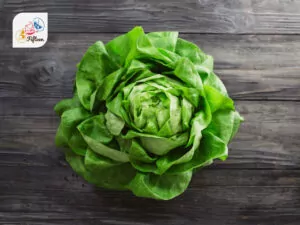
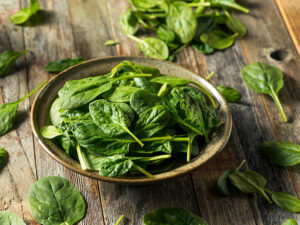
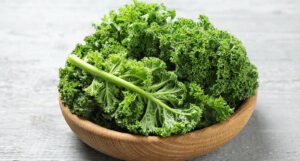
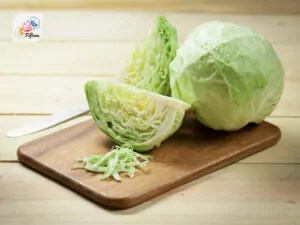
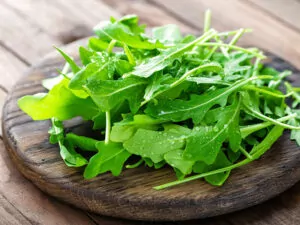
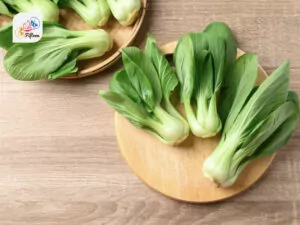
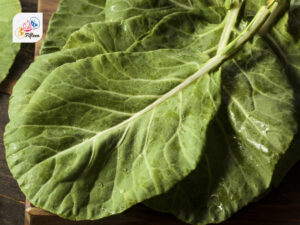
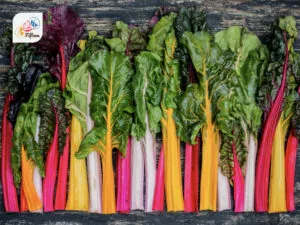
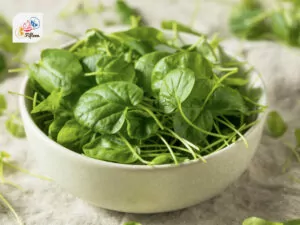
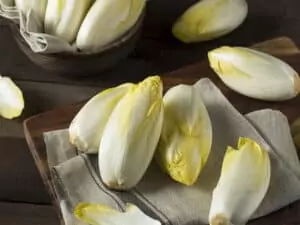
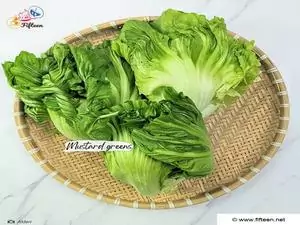
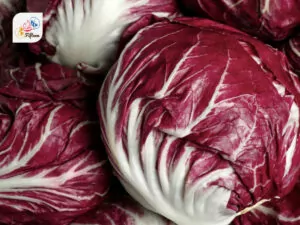
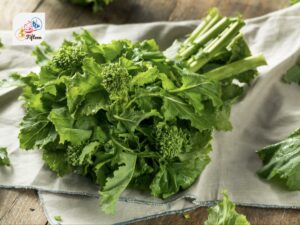
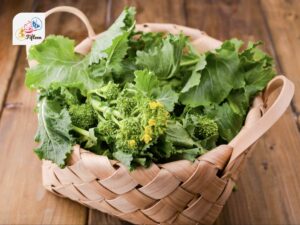
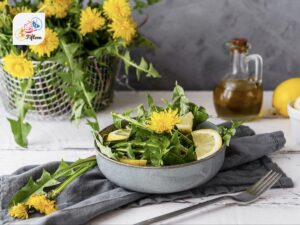
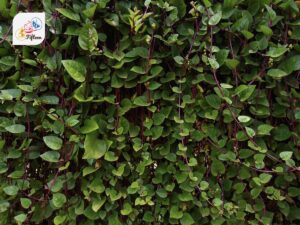
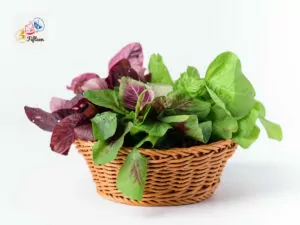
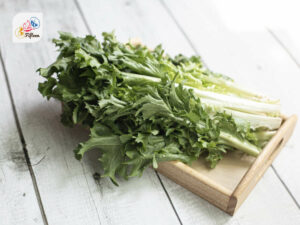
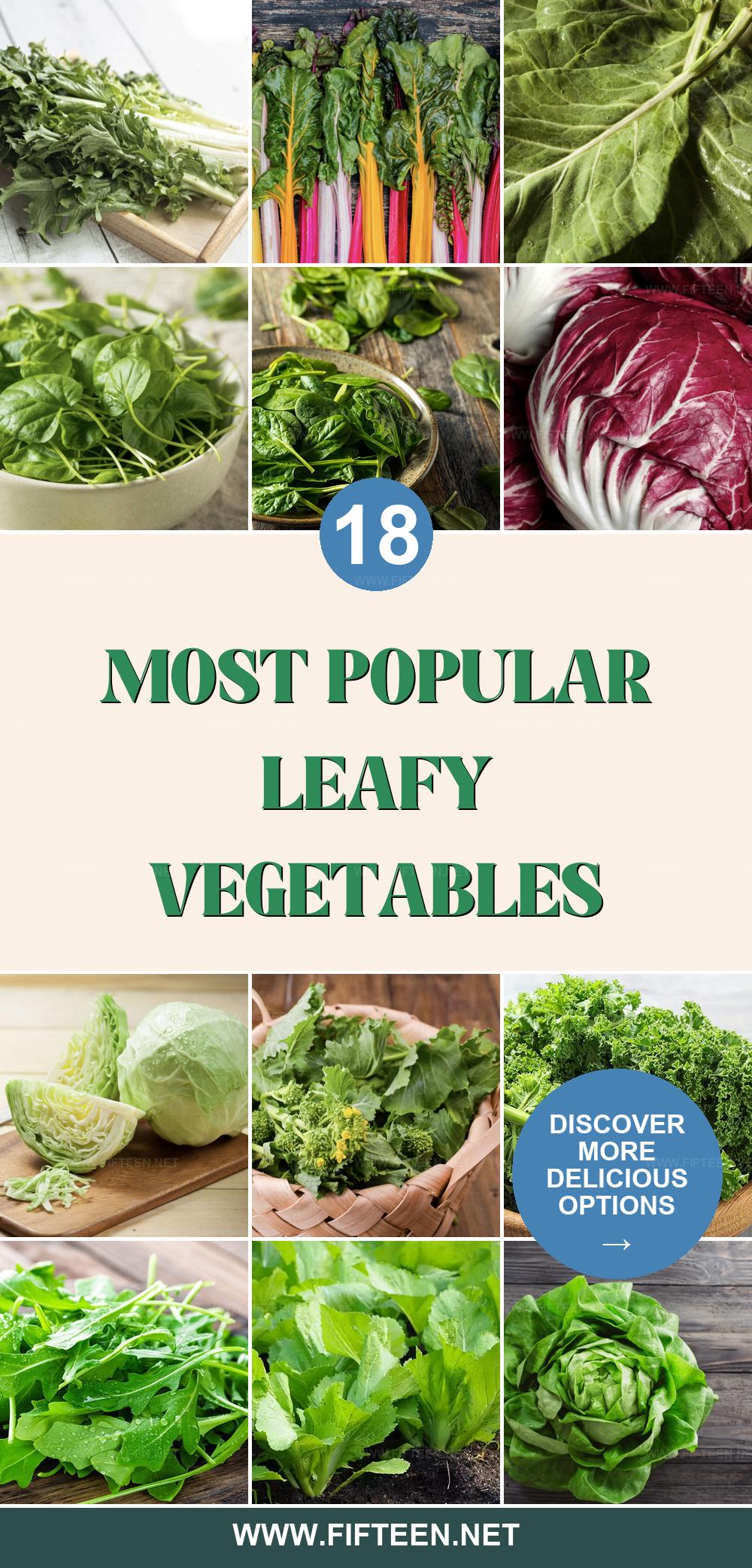
Jamie Scott
Editor in Chief, Senior Content Writer
Expertise
Home Cooking, Meal Planning, Recipe Development, Baking and Pastry, Food Editor, Cooking-video Maker, Western Food Evaluation Expert
Education
Le Cordon Bleu College of Culinary Arts
Local Community College, New York, NY
Jamie Scott is a skilled culinary expert and content creator specializing in Western cuisine. With over 15 years in the culinary field and formal training from Le Cordon Bleu, Paris, Jamie deeply understands how to blend nutrition with delicious flavors. His passion for cooking matches his commitment to making healthy eating accessible and enjoyable.
On Fifteen.net, Jamie brings a fresh perspective to classic dishes and beverages, offering readers insightful recipes, cooking tips, and a fresh view on meal planning that emphasizes taste, health, and simplicity.